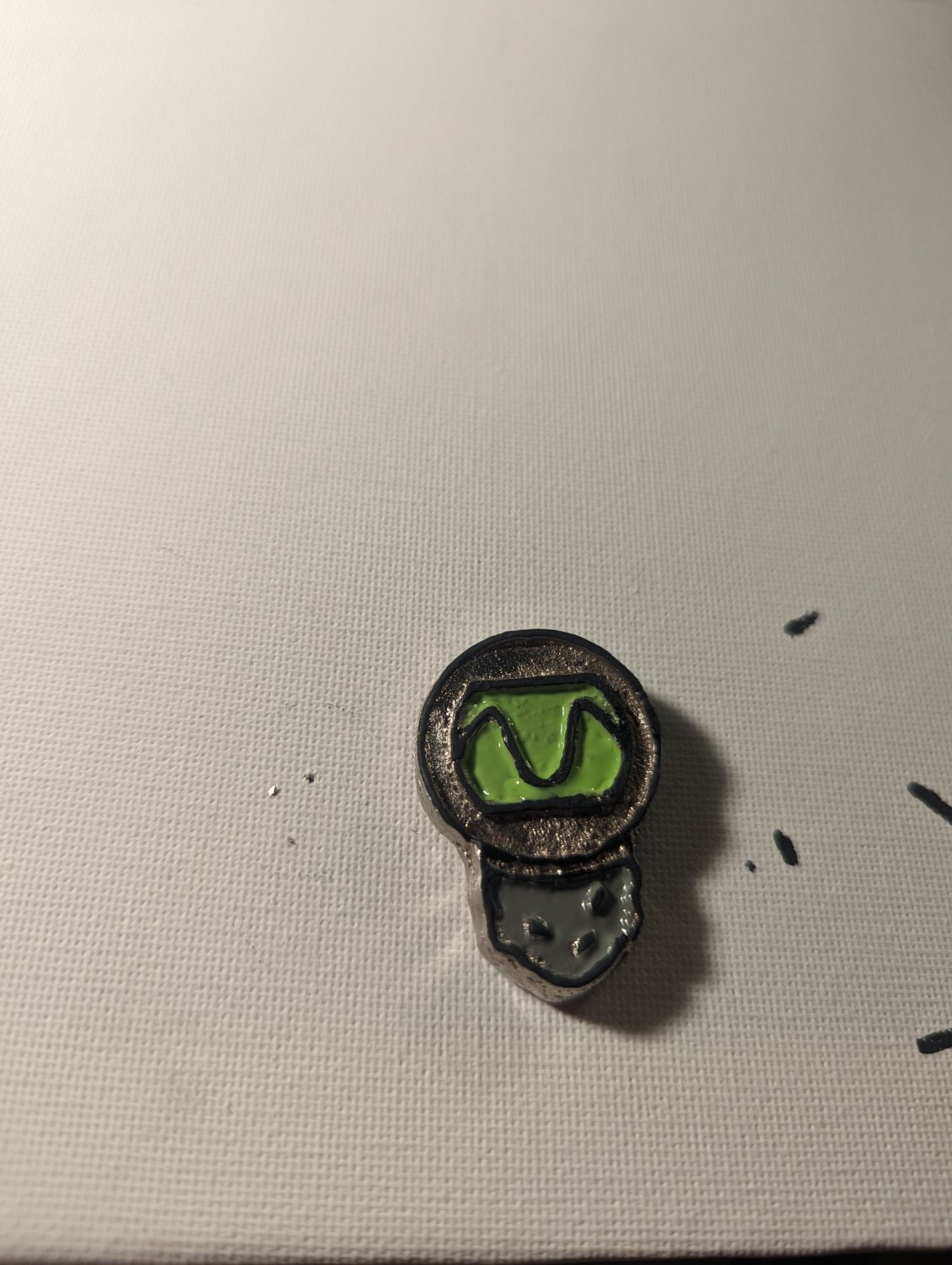The picture is of the 'finished' pin, I'd still like to refine the process a bit.
The general process I follow is:
- print the pin
- use a casting sand like petrobond and fill a metal container
- talcum power the printed pin
- press the pin into the casting sand to make the void for casting
- heat up the bismuth until it is liquid
- heat up the actual pin (looks like a thumbtack)
- pour the molten bismuth into the void, and quickly put the actual pin piece in the molten bismuth, if it's not hot enough the bismuth will cool and the pin won't sink in
- wait for it to cool (about a minute) then pull the pin out with some pliers (it's still hot so you don't want to touch it at that point)
- take a dremel to any flashing that occurred
- paint as required (I'm just using nail polish right now since it's pretty durable)
Hopefully that helps! If you have any other questions I'd be happy to answer them :)

That's sounds rad! You should post some pics on here if you do end up doing it! Totally understandable if you didn't want the trouble tho!